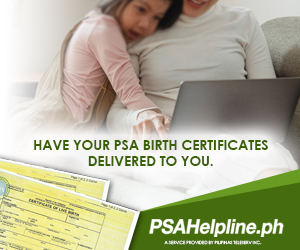When a new baby joins the family, parents may experience a wide range of emotions, from extreme fatigue to overwhelming joy. Bringing a new baby home transforms your life, from the lack of sleep while your body recovers from birth to the obsessive focus on a baby who cannot yet speak with you. As a result, the way you look at life will change dramatically.
If you have everything ready for the baby’s arrival, you have nothing to worry about. However, you should remember that your baby can thrive and grow in a joyful, peaceful environment if you and the rest of the family members are happy and calm.
We have compiled this checklist to assist you in keeping your house as stress-free as possible as you adjust to the arrival of your new baby.
Prepare the Nursery
Prepare the nursery ahead of time in case the baby arrives before your due date. Regardless of the size of the nursery, it is essential to provide separate areas for activities like sleeping, changing, breastfeeding, and playing. Calculate how much room you have for the crib, changing table, and a nice rocking chair or glider for nursing, and place them in the best, safest spots you can think of.
Position the crib in a room protected from sunlight and gusts by placing it from the windows and outside walls. Walls facing the outdoors can be drafty and cold in some climates and houses.
There’s nothing wrong with the traditional pink or blue nursery, but many parents choose gender-neutral color schemes these days. Minimalist nursery wall art or pastel colors work well as a backdrop for classic nursery decor.
Stockpile Baby Essentials
Preparing in advance for the newborn stage by stocking up on necessities will help you save time. In addition, because everything you need will be in your house, you can easily access it whenever possible.
Your baby will use many disposable diapers. For example, a newborn baby may need between 10 and 12 diapers in one day. Therefore, this is something that you should stock in large quantities.
Also, no one likes running out of cleaning supplies when needed. First, observe your routine and determine the items you use the most. After that, make a list of what’s getting short and needs to be restocked.
In addition, making a large batch of food and freezing it is one of the greatest ways to ensure you have enough food to eat during the frantic first few weeks with a newborn. Make a few batches of simple dishes and store them in the freezer.
Most foods will remain edible for several months. This way, you won’t have to spend money on takeout or waste time cooking to get a quick lunch that will fuel you for the demanding work of early motherhood.
Look For A Pediatrician
An ideal time to begin looking for a pediatrician is three months before your due date. To begin, inquire with other nearby parents about which local doctors they trust and highly suggest.
Consider the doctor’s office location when you limit your options for a pediatrician. In the first year of life, babies get multiple doctor’s visits, usually every 2-3 months.
Your first consultation with a pediatrician is a great opportunity to see if you click well with them and if they are a good fit for your child. It is essential to find a physician you can talk openly with. It’s important to trust your instincts. If you don’t feel at ease after your appointment, this isn’t the doctor for you.
Get Extra Help
Many first-time parents, especially mothers, struggle to ask for assistance because they feel pressured to “do it all.” If you have close relationships with relatives and friends in your area, they may be willing to assist you with the new baby. If it isn’t possible, try building a new network of people who can help you.
Furthermore, you should let your partner do things his way when caring for the baby, so he may acquire confidence while learning the necessary skills. Your partner can also take on the role of a gatekeeper, limiting the number of visits during the early days of your newborn to give you some time to yourself in peace.
Get the Car Seats Ready
Prepare for your baby’s arrival by purchasing a car seat early. You should pick a seat that fits your car and is easy to install. The simplest and cheapest model is often just as effective as the more sophisticated and expensive ones.
Put the infant car seat in the back seat at all times. When traveling by car, infants and young children should always be secured in a rear-facing safety seat. Usually, this continues until the passenger reaches the maximum height or weight permitted by the seat.
Read the car seat manual to be sure. In addition, there are height and weight restrictions on most convertible safety seats that state that kids can only ride rear-facing for a year or two.
Final Thoughts
The majority of new parents wrongly believe that parenting comes naturally to them. The truth is that having a new baby at home will be emotionally and physically draining on everyone in the household. However, when everyone in the household works together and there is plenty of time to plan, the environment at home is less stressful and more suited to the baby’s growth and development.
 Copyright protected by Digiprove © 2022
Copyright protected by Digiprove © 2022











